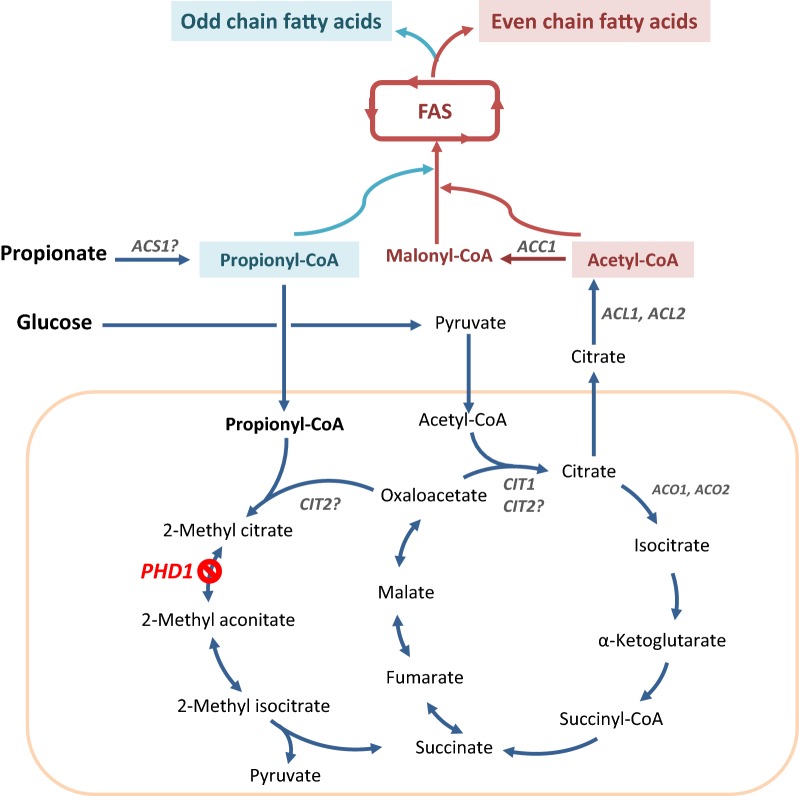Fig. 3.
Overview of the pathways involved in odd and even fatty acid production including the link with the TCA and methyl citrate cycles in Yarrowia lipolytica. Propionate is activated by the cytosolic acyl-CoA synthase (ACS1) to form the propionyl-CoA which is transported into mitochondria to enter the methyl citrate pathway. Propionate is condensed with oxaloacetate to form 2-methyl citrate by 2-methylcitrate synthase probably encoded by CIT2 (CIT2, YALI0E02684g). 2-Methyl citrate dehydratase removes an H2O to form 2-methyl aconitate by 2-methyl citrate dehydratase (PHD1, YALI0F02497), then is hydrated to form 2-methyl isocitrate probably by the aconitase (ACO1, YALI0D09361g; ACO2, YALI0E14949g), which is cleaved by 2-methyl isocitrate lyase (YALI0F31999g) to give succinate and pyruvate. Glucose undergoes glycolysis and enters the mitochondria as a form of pyruvate to be used in the TCA cycle. Mitochondrial pyruvate is condensed with oxaloacetate by citrate synthase (CIT1, YALI0E00638g) to form citrate which can be exported to cytosol. The cytosolic citrate is transformed by the ATP-citrate lyase (subunit a, ACL1, YALI0E34793g and subunit b, ACL2, YALI0D24431g) into acetyl-CoA. Acetyl-CoA is then converted into malonyl-CoA by the acetyl-CoA carboxylase (ACC1, YALI0C11407g) as the first step of fatty acid synthesis. Acetyl-CoA and malonyl-CoA are condensed by the fatty-acid synthase complex (FAS; subunit beta, FAS1, YALI0B15059g and subunit alpha, FAS2, YALI0B19382g) for the production of even fatty acids, while acetyl-CoA and propionyl-CoA are condensed for the production of odd fatty acids

